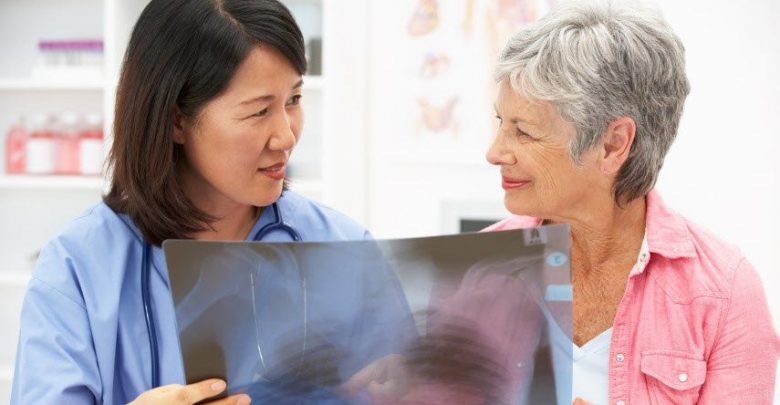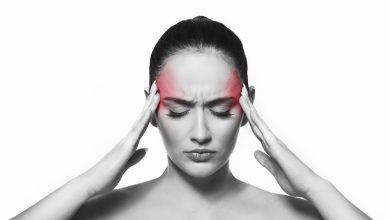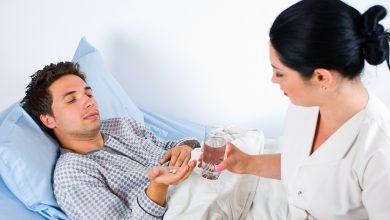Health
Everything You Need to Know About COPD

What Is COPD?
COPD stands for chronic obstructive pulmonary disease. It is a group of progressive lung diseases that cause airflow blockage and breathing-related problems. Two of the most common types of COPD are chronic bronchitis and emphysema.
What Causes COPD?
COPD is caused by long time exposure to irritants that damage a person’s lungs and airways. Some of the main causes of COPD include:
- Smoking – It is estimated that the root cause of 80% – 90% of all COPD cases are because of cigarette smoke. When a cigarette is lit up, it releases over 7,000 chemicals, many of this chemicals are toxic. Overtime, these chemicals make the lungs weak. The lungs are not able to defend itself against infections.
- Environment – The air that you breath everyday plays a role in developing COPD. If you are exposed to second hand smoke, pollution and dust on a regular basis it can cause COPD.
- Alpha-1 Deficiency – Some people are born with a genetic condition, which does not allow the body to produce Alpha-1. Alpha – 1 protects the lungs and without this protection COPD forms.
What Are The Risk Factors
The biggest risk factor associated with chronic obstructive pulmonary disease is smoking. As mentioned above, approximately 80% – 90% of COPD cases are caused by smoking. Some other risk factors include:
- Secondhand smoke
- Alpha-1 deficiency
- History of respiratory infection
- Air pollution
- Working with dust, chemicals or fumes
What Are The Symptoms
In the beginning, symptoms of COPD are not that apparent. Some early symptoms of COPD include:
- Occasional shortness of breath
- Soft periodic hack
As the disease progresses, more symptoms become apparent. The symptoms in the middle stages of COPD include:
- Lack of energy
- Shortness of breath
- The need to clear mucus from the lungs frequently
- Chest tightness
- Chronic cough (with or without mucus)
- Frequent colds and flu
In the late stages of COPD the symptoms include:
- Lack of energy
- Shortness of breath
- The need to clear mucus from the lungs frequently
- Chest tightness
- Chronic cough (with or without mucus)
- Frequent colds and flu
- Weight loss
- Swelling of the feet, legs or ankles
If you experience any of the following extreme symptoms you must seek medical care immediately:
- Heart is racing
- Feel faint or confused
- Have trouble catching your breath or cannot talk
- Bluish or gray fingernails or lips
Diagnosing COPD
There is no single test to diagnose COPD. Physicians base their diagnosis on symptoms, test results, and a physical exam.
When you visit your doctor make sure to provide a full medical history. Make sure to tell your doctor if:
- If you are a smoker or if you have every smoked
- You take any medication
- Family history of COPD
- Exposed to secondhand smoke
- Exposed to irritants
- You have asthma or other respiratory conditions
After reviewing your history, your doctor will perform a physical exam. This includes using a stethoscope to to listen to the lungs.
Some other tests that your doctor may want to do are:
- Spirometry Test – This is a noninvasive test. It requires you to take deep breaths and then blow into a tube that is connected to the spirometer.
- Imaging Tests – These tests include X-ray’s or CT Scan’s. This will help provide a detailed look at the blood vessels, lungs and heart.
- Arterial Blood Gas Test – This test takes blood samples from the artery to measure blood oxygen levels
Treatments For COPD
There are lots of different types of treatment for COPD. The first line of treatment is to change your lifestyle. Some things that you can do are:
- Stop smoking
- Provide your body with proper nourishment
- Stay away from secondhand smoke, exhaust, chemicals and fumes
- Exercise (talk to your physician before you start)
Medication
There are several types of medications used to treat COPD. There are some medications that maybe taken on a regular basis and others that are on a as needed basis. Some of the most common medications are:
- Bronchodilators are a prescription drug that helps unwind the muscles of the breathing tubes so you can breath easier. This is normally taken through an inhaler.
- Glucocorticosteroids can be added to decrease aggravation in the airways.
- To prevent respiratory infections, it is recommended to get the flu vaccine.
Oxygen therapy
Oxygen therapy is used for people with moderate or severe COPD. Several devices help deliver oxygen to a patients lungs. Some of these devices are lightweight and portable. The devices can travel with you. Some other oxygen therapy devices are used only during activities or while sleeping. Some people use he devices at all times.
Pulmonary rehabilitation program
Pulmonary rehabilitation is when a combination of treatments are combined. A patient will work with a combination of specialists that include nutrition, exercise and education.
Surgery
Surgery is saved for the most serious cases of COPD or when medicine is no longer working. The three types of surgery are:
- Bullectomy – The large air spaces (bullae) are removed from the lungs to improve air flow.
- Lung volume reduction surgery – During this surgery, small parts of damaged lung tissue are removed from the upper lungs. This helps the remaining healthier lung tissue expand and helps the diaphragm work more efficiently.
- Lung transplant – A lung transplant helps improve a patients ability to be active and breathe. The downside is that is involves risks because it is a major surgery. Also, it requires using immune-suppressing medications for the rest of your life.
Final Thoughts
We know that this is a lot of information to understand. If you think that you suffer from chronic obstructive pulmonary disease, then it is best to visit a physician for further evaluation.




